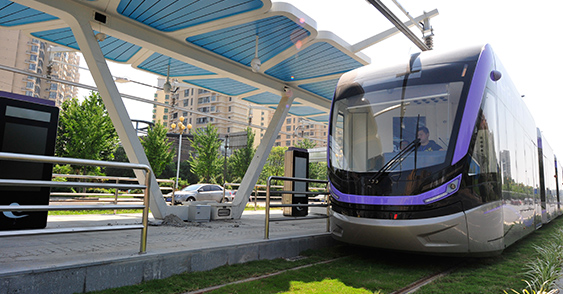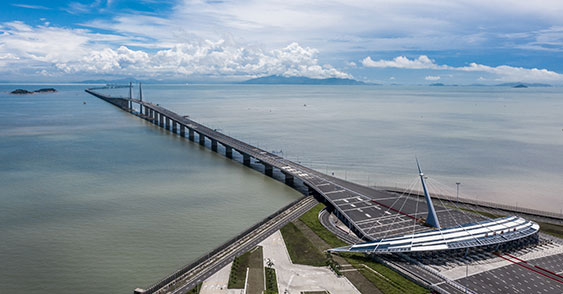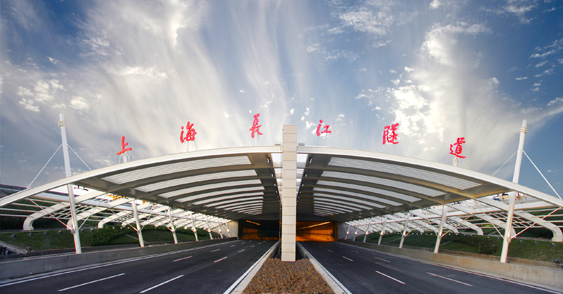
The platform is a comprehensive urban grid management system integrating road network facility management, emergency resource management, maintenance plan management, operation monitoring management and emergency management, so as to control the operation status of road network facilities in megacities in real time and comprehensively, and greatly improve the operation and maintenance service level of urban transportation infrastructure. The platform has digitized the documentation of 1,900 km of road, bridge and tunnel infrastructure, deployed the fine management of 10-meter-level road network, managed 5000+ users, 2000+ suppliers, 2000+ professional vehicles and 200+ maintenance bases with mature big data management and decision-making mechanism, processed 5TB of data annually, received 200,000 work orders and handled 100,000 incidents. The data accumulation and management mode has been continuously iterated and optimized. The overall control of urban operation safety, operation efficiency and facility safety state has been improved, the human cost expenditure has been greatly reduced, the management resources and cost input have been optimized, and the digital transformation and high-quality development of urban operation management have been supported.

Introduction: It is a three-dimensional integrated management and control solution of "view, management, and prevention" for the government's road and transportation administration departments, using a new generation of digital twin technology to empower digital innovative applications of facilities and ensure the safety of bridge operation. The system can realize real-time "cloud" management, including universe awareness, intelligent alarm, and cross-department collaboration to improve disposal efficiency, visual control to improve the quality of information communication, optimized deployment of predictive emergency resources to shorten the time of emergency response, and management and maintenance of facilities throughout the life cycle based on state awareness to improve the service quality of facilities. Launched in February 2022, the system was immediately followed and reported by CCTV News and other media. In June 2022, Shanghai Media Group made a documentary about the system on DRAGON TV as an excellent case of improving the modernization of urban governance. In the future, "Cloud Road Center" will continue to upgrade and evolve. On the basis of 1.0, it will actively expand the application scenarios of digital passenger transport supervision and resident travel services, and gradually form a "smart brain" covering the four core areas of road facilities management, transportation service management, dynamic safety supervision and static traffic supervision, so as to enhance the modernization of road transport governance.

Luanda Angola Stadium, the main stadium of African Nations Cup in 2010 is the largest symbolic architecture in Angola, which occupies 90,000 square meters and is capable of accommodating 50,000 people to watch the game. Since STEC entered Angola market in 2005, we have conducted a series of projects through many years of efforts. In 2008, as the general design construction contractor, STEC took over the work of building Luanda Angola Stadium, the largest single architecture in Angola. The project employs large-span architectural design and the main structure is three-dimensional steel construction extending around, looking like antelope horns on African prairie as a whole. During construction, by means of resource advantage and technical strength in Angola, STEC smoothly solved problems such as complicated structure, tight schedule, high-technical requirement and the shortage of local building materials, in particular lack of water and power supply conditions, thus it received continuous compliments from local governments at all levels and won "The Best Contractor” prize issued by the local government. STEC is the first international general contractor to be received personally by the president in person in Angola history.

Project introduction: Qinwang Tunnel is the first shield tunnel for both highway and railway purposes in Zhejiang Province. The tunnel section, with a total length of 2,868 m, crosses the Fuchun River and connects the Qinwang Square, the "City Eye" of Qinwang, and the Zhongsha district. It works as a crucial infrastructure that improves the cross-rive traffic system in Fuyang. The shield section of left line contracted by STEC is as long as 1,254 m. The outer diameter of tunnel segment is as long as 15.2 m and the inner diameter is 13.9 m. simultaneously, STEC also constructs the underground complex of Qinwang Square, the Qinwang Square Station of rail transit and the relevant ancillary works. The project, upon its completion, will open up the North-South traffic artery of Fuchun Bay in Fuyang, Hangzhou, connect the golden axis of Fuyang rail transit, and thus accelerate the high-quality development in urban integration.

The North Cross Channel is a "horizontal" road of Shanghai’s "three vertical and three horizontal" skeleton network. In the early 1990s, constructing highway for the whole line was the plan. However, the huge size of the highway would tear apart the precious city ground space permanently, occupy public space and impact the surrounding community while the underground tunnel scheme had been stalled for years due to too many construction difficulties. In 2014, thanks to the continuous technological innovation in the field of construction, STEC succeeded in making the North Cross Channel an underground one. After commanding the use of large diameter shield and overcoming the building settlement challenge in Yangtze River and the Bund Tunnel, STEC now has the ability to ensure the safety and quality of the tunnel construction with the highest degree of difficulty and risk in the world. During the construction, STEC will push 15.59 meters’ diameter super large shield excavating from downtown Weining Road, continuously crossing the six metro tunnels in operation and 92 buildings in 6.4 kilometers, turning directions with minimum 500 meters’ radius, overcoming the tunnel lining structure, seal, construction risk and many other challenges. STEC conquered the challenging underground traffic queue in spite of heavy underground traffics and buildings.

The project is signed between STEC and Jiangsu Huai’an government, in the Build-Operate-Transfer mode including investment, design, construction, operation and equity transfer. The total investment of Huai’an tram project is 3.445 billion yuan and the economic indicator is 172 million yuan/km for the main line. Among which a total investment of the tram project is 3.033 billion yuan and its economic indicator is 151 million yuan/km for the main line. The “BOT + Equity Transfer” investment and financing model we use allows the local government to have more flexibility in carrying out the project and balance the budget and cost. The tram, as a ‘new industry’, is also the best alternative for Huai’an government who cannot afford the huge investment in constructing metros. The first phase of Huai’an modern tram is 20.3 kilometers long, all 23 stations are above the ground, and has 4 large underground tunnels, and a depot. Huai’an tram uses a catenary-free power supply which is also the longest catenary-free power supply tramway in China. The tram uses the super capacitor which enables the vehicle to be fully charged in only 30 seconds in the station and a long life cycle of 10 years. In braking, the vehicle’s kinetic energy can be recycled into electrical energy. Huai’an modern tram connects Qinghe District, Huai’an development zone, ecological town, Huai’an District and the city’s commercial center, business center, administrative center, and culture and tourism center, becoming the first tram crossing the city center in China. It provides a reference in tramway construction for other cities, and also motivates the national transport industry towards green and energy-saving development.

With a total length of 15.3 km and a water retention capacity of over 700,000 cubic meters, the deep drainage and storage pipeline system engineering of Suzhou River serves as a key link for Shanghai to systematically develop its in-deep underground space for the first time and to construct "sponge city". The capacity of drainage system along the Suzhou River can be promoted from once every year to once every five years after the whole project is completed. In this way, Shanghai can effectively address the once-in-a-century rainfall and basically eliminate the initial rainwater contamination along the Suzhou River. The Miaopu experimental section undertaken by STEC is as long as 1.61 km. The buried depth of the tunnel will be from 42 m to 60 m. In this experimental section, STEC constructed a round shaft foundation pit as deep as 56.6 m, the deepest foundation pit in soft soil in China. Ultra-deep shaft construction technology is becoming the benchmark for similar projects in the future. It will provide referential significance for the future development and utilization of underground space.

The river-crossing tunnel under West Jianning Road, Nanjing begins at the intersection of Xingpu Road and Jiangbei Avenue in Jiangbei New District; its main line, constructed with a bridge over Jiangbei Avenue, ends near the intersection of Jianning West Road and Rehe Road. The route has a total length of about 6,801 m, of which the tunnel section is as long as about 3,550 m (Including opening section), the subgrade section is as long as about 336 m, and the elevated section is as long as about 2,915 m. “Jianning” slurry balance shield tunneling machine with a super large diameter of 15.07 m was adopted for tunnel construction. The shield tunneling machine will penetrate through the Yangtze River levee, Nanjing Metro Line 5 and other sensitive buildings in succession. The construction of river-crossing tunnel under West Jianning Road is of great significance for Nanjing to speed up the construction of Jiangbei New District, improve the capacity of Yangtze River trunk, relieve the traffic pressure of the main city across the Yangtze River, and keeps promoting the regional road network system.

STEC Urban Operation establishes the bridge operation mode, strengthens the operation standard and improves the operation concept for the Hong Kong-Zhuhai-Macao Bridge Administration Bureau through comprehensive and in-depth consultation services from multiple perspectives of the document system for operation standards, the organizational framework and staffing, the management system, the technical document system, the outsourcing management, the government affairs linkage, the comprehensive development, etc. Those efforts contribute to the smooth transition of the Hong Kong-Zhuhai-Macao Bridge from the construction period to the operation period, and provide a strong technical service support for the safe, orderly and efficient operation of the facility during the subsequent trial operation period.

Shanghai Yangtze River Tunnel epitomizes the highest technical standard of shield method tunnel construction in the world. The overall length of the tunnel is 8.95 kilometers. We used a slurry balance shield, which is 15.43 meters in diameter, developed and manufactured by STEC and German Herrenknecht AG together, to excavate 7.45 kilometers in the tunnel, 55 meters deep at the bottom of the Yangtze River. This project broke three world records at that time, the largest shield diameter, the longest distance with single excavation, and the deepest buried depth. During the construction of Yangtze River Tunnel, the three major challenges STEC faced were “length, width and depth”. In accordance to the design, construction and disaster prevention of oversize-diameter and extra-long distance shield tunnel under the condition of complicated soft soil stratum, STEC mastered the stability of oversize-diameter shield tunneling and the accuracy of extra-long distance shield tunneling, resolving seven world-class technical difficulties including the synchronous construction technology which prevents the tunnel from floating, overcoming 50 crucial construction problems and furthermore, creating the global standard of extra-large tunnel construction in future cities. Yangtze River Tunnel is also the first shield tunnel adopting all-around stagger assembling craft in our country. STEC manufactured 74,710 pieces of large reinforced concrete segment for its production, and the precise fault margin of which is lowered under 0.5 millimeter, which ensured the quality of the tunnel form.
At present, the Shanghai Yangtze River tunnel has won various domestic tunnel construction awards, including China Civil Engineering Jeme Tien Yow Award, Gold Medal of National Quality projects and others. It also became the first Chinese tunnel project to win "The Tunnel Award" from International Tunneling Association.

The Phase Ⅲ reconstruction and expansion project of Shanghai Songshen Water Environment Purification Co., Ltd. is located on the south of the company, the south side of Tongxin Road and the east side of Beimaojing. The construction contents involve the sewage plant and the pipeline for pump station outside the plant. The sewage plant involves the following tasks: Upgrade and reconstruct Phases I and II, and expand the capacity of Phase Ⅲ; the treatment capacity of Phase I and II is 140,000 m3/d; upgrade and reconstruct the current situation of Phases I and II, and reduce the capacity by 20,000 m3/d; the sewage treatment capacity will be expanded by 80,000 m3/d in Phase Ⅲ. After the reconstruction and expansion, the whole plant will receive new actual processing capacity of 60,000 m3/d, and its total processing capacity will be 200,000 m3/d. This will greatly improve the sewage treatment capacity in Songjiang area. The effluent quality will not be lower than Grade A standard. That is of great significance for the water source protection in the upper reaches of Huangpu River, the local ecological environment protection and the livelihood improvement.

The airport connection line project in urban rail transit line of Shanghai Metro has a total length of 68.6 km and passes through Minhang, Xuhui and Pudong Districts, with 9 stations throughout the line. The project is scheduled to be completed for operation in 2024. At that time, the transit time between Hongqiao Airport and Pudong Airport is expected to be within 40 minutes. The airport connection line project is the first rail transit project that connects the national railway in China. As an east-west fast track connecting Hongqiao hub and Pudong hub, the project contributes to enhancing Shanghai radiation and service functions to the Yangtze River Delta. It provides strong support for Shanghai to improve its urban capacity level and core competitiveness, and to implement the national strategy of integrated development in the Yangtze River Delta. STEC undertook the construction tasks at Sections 3, 4, 5 and 12 in the airport line. They involve difficulties and highlights in ultra-low altitude construction work, super-deep diaphragm construction, ultra-long precipitation, super-large foundation pit construction, ultra-high structure construction, ultra-close crossing, internal assembly construction with fully prefabricated tunnel segments, etc.